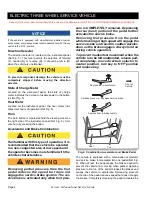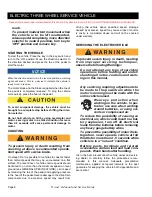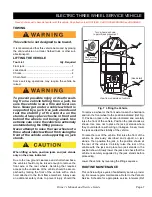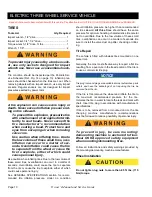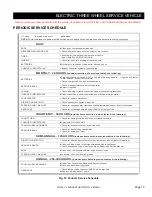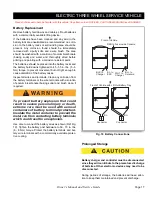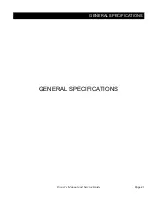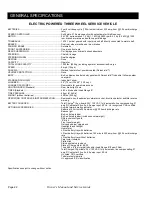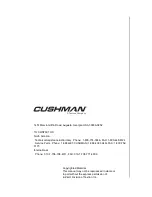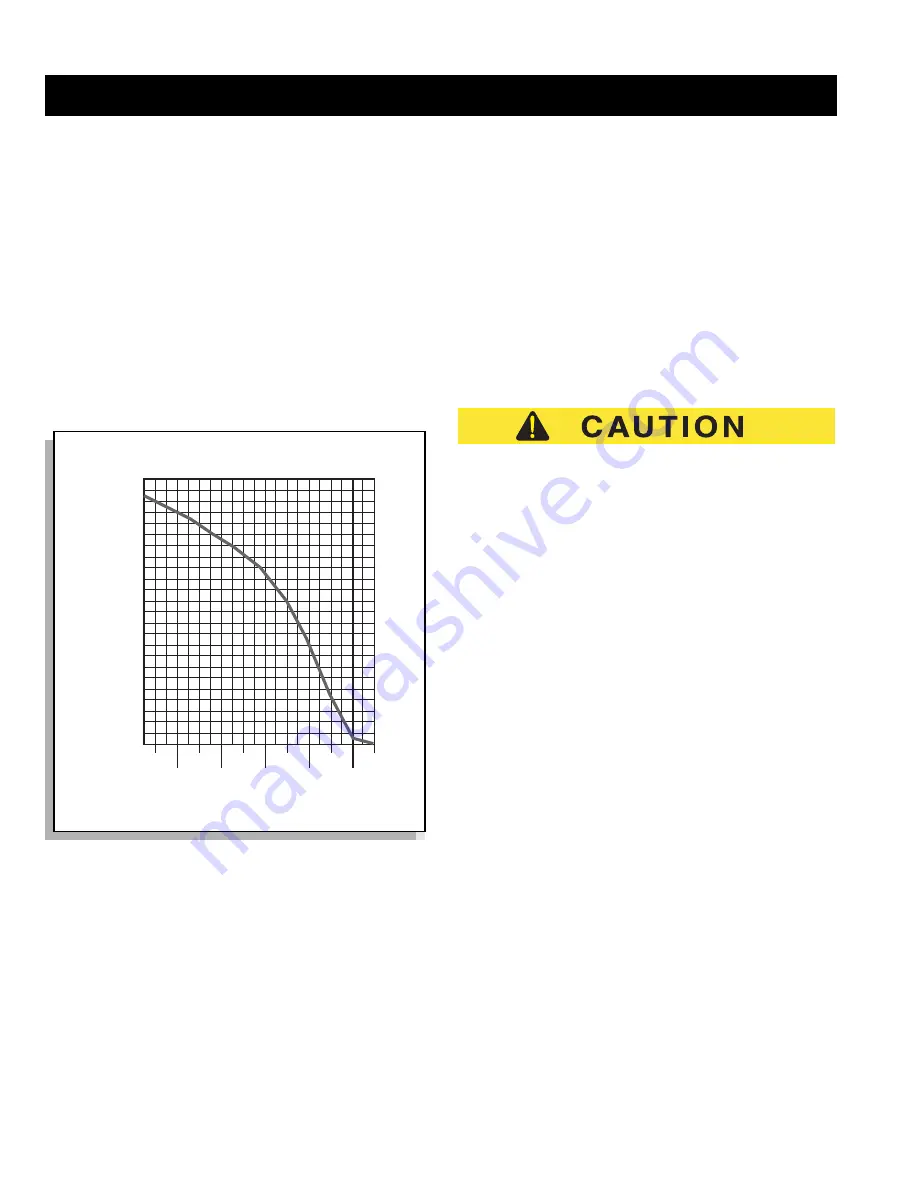
ELECTRIC THREE WHEEL SERVICE VEHICLE
Page 18
Owner’s Manual and Service Guide
Read all of manual to become familiar with this vehicle. Pay attention to all NOTICES, CAUTIONS,WARNINGS and DANGERS.
In high temperatures the chemical reaction is faster,
while low temperatures cause the chemical reaction to
slow down. A vehicle that is stored at 90° F (32° C) will
lose .002 of specific gravity each day. If a fully charged
battery has a specific gravity of 1.275, and the battery is
allowed to sit unused, it will become partially discharged.
When it reaches 1.240, which it will do in less than
twenty days, it should be recharged. If a battery is left in
a discharged state, sulfating takes place on and within
the plates. This condition is not reversible and will cause
permanent damage to the battery. In order to prevent
damage, the battery should be recharged. A hydrometer
can be used to determine the specific gravity and there-
fore the state of charge of a battery.
In winter conditions, the battery must be fully charged to
prevent the possibility of freezing (Ref Fig. 20). A fully
charged battery will not freeze in temperatures above -
75° F (-60° C). Although the chemical reaction is slowed
in cold temperatures, the battery must be stored fully
charged, and disconnected from any circuit that could
discharge the battery. For portable chargers, disconnect
the charging plug from the vehicle receptacle. For on-
board chargers, disconnect the charging harness from
the batteries. The batteries must be cleaned and all
deposits neutralized and removed from the battery case
to prevent self discharge. The batteries should be tested
or recharged at thirty day minimum intervals.
Battery Charging
The battery charger is designed to fully charge the bat-
tery set. If the batteries are severely deep cycled, some
automatic battery chargers contain an electronic module
that may not activate and the battery charger will not
function. Automatic chargers will determine the correct
duration of charge to the battery set and will shut off
when the battery set is fully charged. Always refer to the
instructions of the specific charger used.
Before charging, the following should be observed:
Do not overfill batteries. The charging cycle will
expel electrolyte and result in component damage.
•
The electrolyte level in all cells must be at the rec-
ommended level and cover the plates.
•
The charging must take place in an area that is
well ventilated and capable of removing the hydro-
gen gas that is generated by the charging pro-
cess. A
minimum
of five air exchanges per hour
is recommended.
•
The charging connector components are in good
condition and free from dirt or debris.
•
The charger connector is fully inserted into the
vehicle receptacle.
•
The charger connector/cord set is protected from
damage and is located in an area to prevent injury
that may result from personnel running over or
tripping over the cord set.
•
The charger is automatically turned off during the
connect/disconnect cycle and therefore no electri-
cal arc is generated at the DC plug/receptacle
contacts.
AC Voltage
Battery charger output is directly related to the input volt-
age. If multiple vehicles are receiving an incomplete
charge in a normally adequate time period, low AC volt-
age could be the cause and the power company should
be consulted.
Fig. 20 Freezing Point of Electrolyte
1.100
1.120
1.160
1.200
1.240
1.280
1.140
1.180
1.220
1.260
1.300
-9
-15
-21
-26
-32
-37
-43
-48
-54
-60
-65
-71
E
L
E
C
T
R
O
L
Y
T
E
T
E
M
P
E
R
A
T
U
R
E
SPECIFIC GRAVITY ELECTROLYTE FREEZING POINT
O
C
+15
+5
-5
-15
-25
-35
-45
-55
-65
-75
-85
-95
O
F

